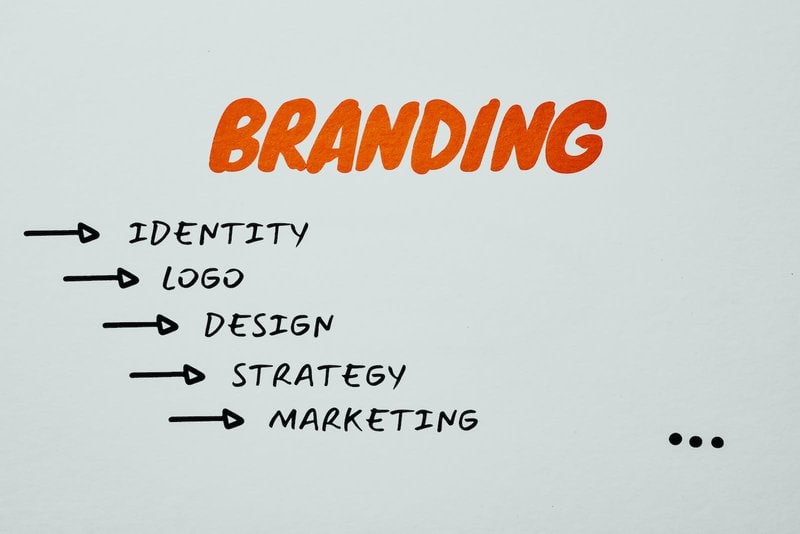How To Establish Brand Guidelines For Consistent Branding

Brand guidelines are essential for maintaining a consistent and cohesive brand image across different teams within an organization. By establishing these guidelines, companies can ensure that their branding efforts are aligned, regardless of which team or department is responsible for implementing them.
This article explores the importance of a unified brand identity and the steps involved in creating and implementing brand guidelines. It begins by emphasizing the significance of a consistent brand identity in establishing brand recognition and trust among customers.
The article then delves into the process of defining core values and personality, creating a brand style guide, and establishing consistent messaging and tone of voice. Additionally, it discusses visual branding elements and guidelines, as well as the importance of training and educating teams on brand guidelines.
Lastly, it addresses the importance of monitoring and maintaining consistency to ensure the longevity and effectiveness of the brand.
Key Takeaways
- Brand guidelines are essential for maintaining a consistent and cohesive brand image across different teams within an organization.
- Consistency in branding establishes reliability, credibility, and professionalism, leading to customer loyalty and satisfaction.
- A brand style guide outlines visual elements and guidelines for maintaining a cohesive and professional brand image.
- Implementing brand guidelines requires clear communication channels, comprehensive training, and brand ambassadors or managers.
The Importance of a Unified Brand Identity
A unified brand identity is crucial for organizations as it creates a strong emotional connection with the audience, instills trust, and enhances brand recognition, ultimately leading to increased customer loyalty and satisfaction.
When a brand presents a consistent image across all its communication channels, it reinforces its message and values, making it easier for customers to recognize and relate to the brand.
A unified brand identity also helps establish a sense of reliability and credibility, as customers perceive consistency as a sign of professionalism and trustworthiness.
This consistency in branding enhances customer loyalty and satisfaction, as customers are more likely to align themselves with a brand that consistently delivers on its promises.
Moreover, a unified brand identity fosters a sense of familiarity and familiarity breeds trust, which is essential for building long-term relationships with customers.
Defining Your Brand’s Core Values and Personality
Defining the core values and personality of a brand involves presenting a clear and distinct image that captures the essence of the brand and resonates with its target audience. This process is crucial as it helps establish a strong foundation for consistent branding across teams.
Core values define the fundamental beliefs and principles that guide the brand’s actions and decisions. They reflect what the brand stands for and its commitment to its customers.
Personality, on the other hand, refers to the unique set of traits and characteristics that define the brand’s tone, style, and overall demeanor. It helps to humanize the brand and create a connection with consumers.
By defining these core values and personality traits, brands can ensure that their messaging and visuals align with their brand identity, leading to a cohesive and consistent brand experience for their audience.
Creating a Brand Style Guide
Creating a brand style guide involves designing a comprehensive document that outlines the visual elements and guidelines to be followed in order to maintain a cohesive and professional brand image.
This guide serves as a reference for all team members involved in brand-related activities, ensuring consistency and coherence across different platforms and materials.
The brand style guide typically includes the following elements:
- Logo usage: Guidelines on how to properly use the logo, including size, placement, and clear space requirements.
- Typography: Specifications on the fonts to be used for various purposes, such as headings, body text, and captions.
- Color palette: The specific colors that represent the brand, including their hex codes or Pantone numbers.
- Imagery: Guidelines on the types of images or graphics that align with the brand’s visual identity.
- Tone of voice: Recommendations on the language and writing style to be used in brand communications.
By providing clear instructions and examples, a brand style guide enables teams to consistently represent the brand’s values and personality, establishing a strong and recognizable brand identity.
Consistent Messaging and Tone of Voice
Maintaining a consistent messaging and tone of voice across various communication channels ensures that the brand’s personality and values are effectively conveyed to the audience, creating a cohesive and memorable brand experience.
Consistency in messaging involves using the same language and key messages across different platforms, such as social media, website content, and advertising materials. This helps to reinforce the brand’s identity and build trust with the audience.
Additionally, having a consistent tone of voice involves using a consistent style and language that aligns with the brand’s values and target audience. It helps to establish a brand’s personality and differentiate it from competitors.
By maintaining consistent messaging and tone of voice, brands can effectively communicate their message, strengthen their brand identity, and create a lasting impression on their audience.
Visual Branding Elements and Guidelines
Visual branding elements and guidelines play a crucial role in shaping a brand’s image and perception, as they encompass the design elements, such as logos, colors, typography, and imagery, that visually represent the brand and communicate its values and identity to the audience.
These elements provide a consistent visual language for the brand, enabling it to be easily recognizable and memorable. By adhering to brand guidelines, teams can ensure that all visual assets and materials maintain a cohesive and unified look and feel. This consistency helps to establish trust and credibility with the audience, as they become familiar with the brand’s visual identity.
Moreover, visual branding elements and guidelines evoke emotions in the audience by creating a visual connection that resonates with their values, preferences, and aspirations. They can evoke feelings of trust, excitement, or luxury, depending on the design choices made.
Overall, visual branding elements and guidelines are powerful tools for creating a strong and consistent brand identity.
Implementing Brand Guidelines Across Teams
Implementing brand guidelines effectively ensures a cohesive and unified brand identity throughout different departments and individuals within an organization. To achieve this, organizations need to establish clear communication channels and provide comprehensive training to all team members. This training should cover the importance of adhering to brand guidelines, as well as the specific elements and rules outlined in the guidelines.
Additionally, organizations should appoint brand ambassadors or brand managers who can oversee the implementation of guidelines and provide guidance and support to team members. Regular check-ins and feedback sessions should also be conducted to monitor adherence to the guidelines and address any concerns or questions.
By implementing brand guidelines across teams, organizations can maintain consistency in their branding efforts and reinforce their desired brand image.
Training and Education on Brand Guidelines
In order to successfully implement brand guidelines across teams, it is crucial to provide thorough training and education on these guidelines. By equipping team members with a comprehensive understanding of the brand guidelines, they will be better equipped to consistently apply them in their work.
Training sessions can be conducted to introduce team members to the brand guidelines and explain their importance in maintaining a cohesive brand image.
Additionally, ongoing education can be provided through workshops or online resources to reinforce the guidelines and address any questions or concerns. This continuous learning approach ensures that team members are up-to-date with any changes or updates to the brand guidelines.
By investing in training and education, organizations can foster a culture of brand consistency and alignment across teams.
Monitoring and Maintaining Consistency
To ensure the integrity and coherence of a brand’s image, it is essential to regularly monitor and uphold consistency in its application. Monitoring and maintaining consistency involves implementing processes and systems to ensure that all brand materials and communications adhere to the established guidelines.
This can be achieved through regular audits and reviews of brand assets, such as logos, typography, colors, and messaging, to identify any deviations or inconsistencies. Additionally, providing ongoing training and resources for employees can help reinforce the importance of brand consistency and equip them with the necessary knowledge and tools to uphold it.
Furthermore, establishing a central repository or style guide that outlines the brand guidelines can serve as a reference for all teams, ensuring that they have access to the most up-to-date information and materials. By continuously monitoring and maintaining consistency, a brand can establish a strong and recognizable identity across all teams and touchpoints.
Frequently Asked Questions
How can I ensure that my brand guidelines are effectively communicated to all team members?
Effective communication of brand guidelines to all team members can be achieved through various means such as conducting training sessions, creating a comprehensive brand manual, using visual aids, implementing regular updates, and providing ongoing support and guidance.
What are some common challenges that companies face when implementing brand guidelines across different teams?
Common challenges that companies face when implementing brand guidelines across different teams include lack of awareness, resistance to change, inconsistent interpretation, and difficulty in enforcing guidelines. These challenges can hinder effective communication and lead to inconsistent branding practices.
Are there any specific tools or software that can help in maintaining brand consistency?
There are several tools and software available to help maintain brand consistency. Some popular options include Brandfolder, Frontify, and Lucidpress. These tools provide centralized platforms for storing and sharing brand assets, as well as features for creating and enforcing brand guidelines.
How often should brand guidelines be reviewed and updated?
Brand guidelines should be reviewed and updated regularly to ensure they remain relevant and aligned with the organization’s goals and market trends. Best practices suggest conducting a comprehensive review at least once a year, or whenever significant changes occur in the business or industry.
How can I measure the success of implementing brand guidelines across teams?
The success of implementing brand guidelines across teams can be measured through various metrics, such as brand consistency in visual identity, message alignment, customer perception, employee adherence, and market share growth.







